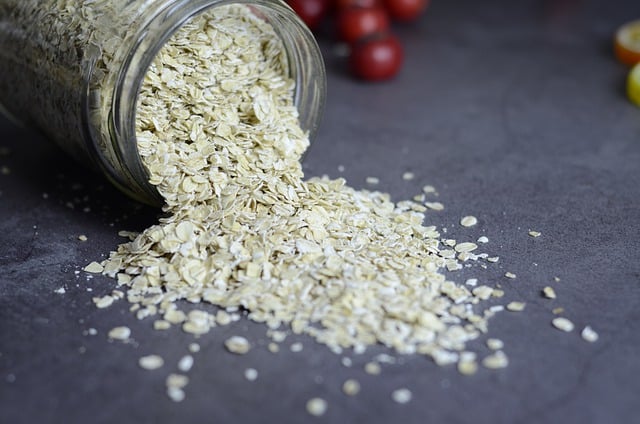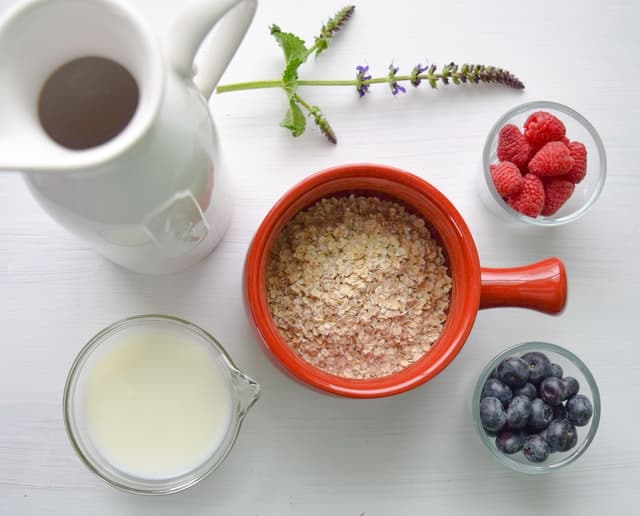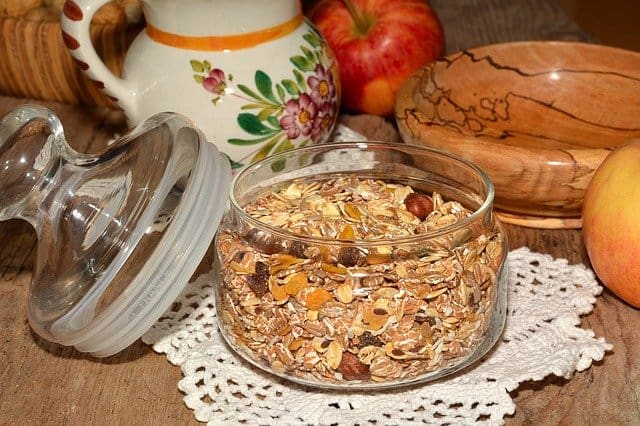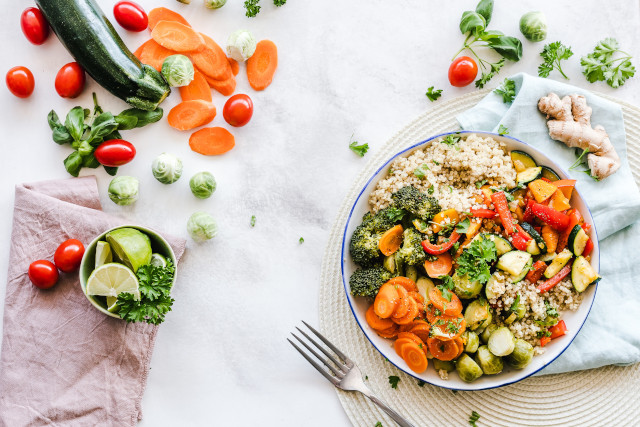
It is important to control the number of carbohydrates you eat at one meal because carbohydrates directly affect your blood sugar levels. It is also important to choose carbohydrates rich in nutrients and fibre and not refined or processed carbohydrates with added sugar (which, unfortunately, are found in almost every food in our stores).
Contents
This means that what you eat makes an enormous difference. Eating foods that are high in fibre and nutrients but low in unhealthy fat and sugar can help keep blood sugar levels steady and improve our health. Oatmeal offers many health benefits and can be a portion of great food for people with diabetes as long as the ratio is controlled. One cup of cooked oatmeal contains about 30 grams of carbohydrates, which can fit into a healthy meal plan for people with diabetes.
Health benefits for diabetes. Oatmeal might have several benefits for people with diabetes, even though it is a high carb food. In this article, I will try to explain how Quaker oats are a healthy and clever choice for breakfast for people with diabetes.
Heart-Healthy
People with diabetes may also need ways to control other conditions, such as high cholesterol. Alex may be especially helpful to them. Thanks to the healthy beta-glucans as a study posted to the American journal of clinical nutrition, trusted, Source notes adding three or more grams of beta-glucans. Most of the diet helps reduce bad cholesterol levels while keeping good cholesterol levels the same.
Basic Oatmeal
Oatmeal. In its most basic form is simply Open Water. This may be healthy, but it is also good. Luckily, there are a few safe ways to add flavour to simple oatmeal. Make it more enjoyable, spices. Cinnamon is a sweet spice that brings out the earthy flavour of the O’s to make the meal more. Interesting sweeteners for added sweetness.
Some people use sweeteners such as sucralose Stevia or monk fruit. Sweetener milk, some people cut back on the serving. And replace those carbs with milk by mixing it with the water during cooking, or adding it, at the end. This gives the oatmeal, a richer flavour, fruit and nuts, blueberries are crushed.
Nuts can add texture and flavour. So long as the person keeps their total carbs or GI scores in mind. There are several ways to make basic oatmeal outstanding
Nutritional content

There are many ways to make oatmeal, but the most basic form of oatmeal. Are those cooked in hot water According to the United States Department of Agriculture, National nutrient database.
The typical serving
- size of ½ cup of oats contains 300 calories,
- 13 grams of protein,
- 5 grams of fats,
- 52 grams of carbohydrates and 8 grams of total fibre.
Note*
Contain helpful minerals, such as forty, two milligrams of calcium 42, Grams of iron. 138 milligrams of magnesium 480, milligrams of phosphorus, 335 of potassium, and three milligrams of zinc.
Oats are naturally low in sodium and sugars. This may be helpful for people with diabetes who are looking for more healthful food choices. Overall, as these numbers show, oatmeal is still mainly a source of carbohydrates. People who use carb counting to help control their blood sugar may not like what they see at first, as 52 grams of carbohydrates is still quite a lot.
Consider that about eight of these grounds come as dietary fibre, which may help to prevent spikes of glucose in the blood. With that in mind. It is still important to eat oats in moderation and follow a meal plan. That is suitable for diabetes.
Low Gi Score
The glycemic index is a way to estimate health foods will raise blood glucose the higher. The number, the higher the food that raises blood glucose. Foods with lower GI scores are ideal for helping to keep blood sugar stable.
These foods will typically not rank the blood glucose as far or as fast as high GI foods such as oatmeal and usually made from steel-cut or rolled oats are low GI Foods. The score of under 55 compared to other breakfast cereals such as puffed. Rice or corn flakes have a GI score of above 70.
Fibre-Rich
Fibre plays an important role in digestion, especially in someone with diabetes. Dietary fibre may help slow down the breakdown of sugars in the body. This may help prevent spikes in blood glucose and insulin levels, eating fibre rich foods, like oatmeal. Throughout the day it may make it easier for people with diabetes to keep their blood sugar stable.
The American Diabetes Foundation notes that adults should eat at least 25 to 30 grams of fibre each day, but most adults do not even come close, a serving of oatmeal adds Grams of fibre to the diet, making it much easier to reach dietary recommendations.
Lower blood sugar.
Oats are special in that they contain specific types of fibres called beta-glucans, a systematic review posted to the journal. The Nutrition Hospital area found that eating beta-glucans was enough to help lower blood glucose levels in people with diabetes. The review noted that this would not help blood glucose levels reach normal levels but it may be a helpful supplement to other healthy diabetes practices.
Feeling Full
Fiber-rich foods like oatmeal may also help keep the body feeling satisfied for longer. This may make it easier to avoid snacking throughout the day, which may help with overall blood sugar balance. Feeling full may also help. Some people keep their total daily calories down. This may help them maintain their ideal weight or lose a sense of direction.
Temporary increase in insulin sensitivity
Eating oats may also help improve insulin sensitivity. In each meal, a systematic review posted to the journal nutrients noted that a person with type 2 diabetes, who ate a meal of oatmeal, had a better glucose and insulin response than a person who ate a similar control meal. It is important to note that this is a modest change and simply adding notes to the diet is not enough to improve insulin sensitivity permanently.
Do’s and don’ts of oatmeal and diabetes

Do:
- Eat it with protein or healthy fat such as eggs, nut butter, or Greek yoghurt. Adding 1–2 tablespoons of chopped pecans, walnuts, or almonds can add protein and healthy fat, which can further help stabilize your blood sugar.
- Choose old-fashioned or steel-cut oats. These choices contain a higher amount of soluble fibre, which helps better regulate blood sugar and are minimally processed to slow digestion.
- Cinnamon is full of antioxidants, has anti-inflammatory properties, and may help reduce the risk of heart disease. It may also improve insulin sensitivity and may help lower blood sugar levels.
- Add berries. Berries also have antioxidants and good nutrients and can act as a natural sweetener.
- Use low-fat milk, unsweetened soy milk, or water. Using low-fat or soy milk can increase nutrients without adding too much fat to the meal. Water is preferable to cream or higher fat milk for those trying to reduce calorie and fat content. However, keep in mind that the amount of milk used needs to be accounted for toward total carb intake for your meal. Eight ounces of regular milk contains approximately 12 grams of carbs.
Don't:
- Don’t use prepackaged or instant oatmeal with added sweeteners. Instant and flavoured oatmeal contain added sugar and salt. They also have less soluble fibre. Choose a healthy variety of oatmeal.
- Don’t add too much-dried fruit. Just a tablespoon of dried fruit can have a high amount of carbohydrates. Be mindful of your portions.
- Don’t add too many caloric sweeteners. People commonly add sugar, honey, brown sugar, or syrup to oatmeal. These can significantly raise blood glucose levels. You can safely add no- or low-calorie sweeteners.
- Limit or avoid using cream. Use either water, soy milk, or low-fat milk to make oatmeal.
Comment
People with diabetes may benefit from substituting these for other highly refined, sweetened breakfast cereals. As with all carbohydrate sources, pay attention to portion size. You can start your day with a meal that better regulates your blood sugar and provides a long-lasting source of energy. It will also help improve your heart health. By choosing the right toppings, oatmeal can be a hearty breakfast for people with diabetes.
Always monitor your blood sugar levels to see how oatmeal affects you. Everyone with diabetes is different. Always talk to your doctor before making any major changes to your diet. Registered dietitians can also help individualize a meal plan to meet your specific needs. But most importantly, be self-disciplined and follow a strict diet program. We need to be conscious of what we do and what we eat.





